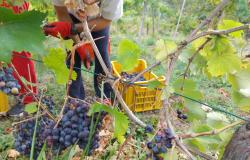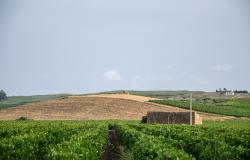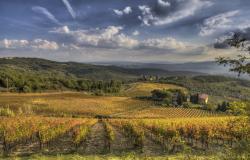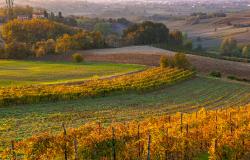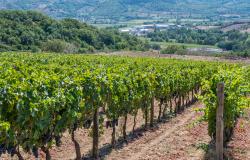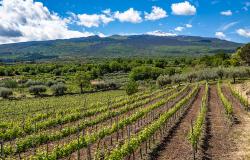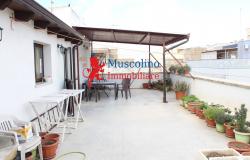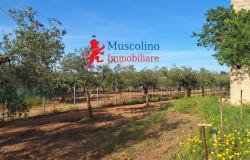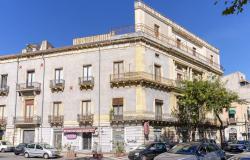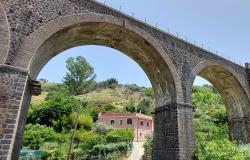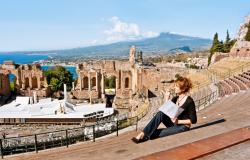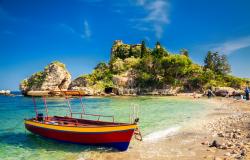On May 11, 1860, Giuseppe Garibaldi and ‘I Mille’ – ‘The Thousand’ (or so) volunteer patriots that formed the core of his fighting force – landed at the port of Marsala, in western Sicily and took the town without a shot being fired.
This was a key moment in the Risorgimento. Garibaldi’s subsequent march through Sicily and up to Naples eventually led to the unification of Italy and the creation of the modern Italian nation. The British warships ‘Intrepid’ and ‘Argus’ protected the harbour at the time of Garibaldi’s landing.
Apparently the Bourbon occupiers didn’t fire on Garibaldi and his troops for fear of hitting the British. The mariners of the British Navy, it is probably safe to presume, were plying themselves with the wine for which this town is most famous: Marsala. Marsala is an amber-coloured, rich, and most usually fortified dessert wine.
In truth, it is a style that seems totally at odds with the life and food in western Sicily: it’s hardly possible to imagine drinking Marsala with, say, a plate of grilled swordfish, another local speciality of the area. The wine, simply, is at odds with its zone of production. And yet, the Marsala wine industry has since the 18th century been a fundamental and important part of the local economy.
”Marsala victory wine”
 Like other great fortified wines such as sherry and port, Marsala developed historically not as a drink of the local people, but as a wine primarily intended for export to London and the British Empire.
Like other great fortified wines such as sherry and port, Marsala developed historically not as a drink of the local people, but as a wine primarily intended for export to London and the British Empire.
An Englishman, John Woodehouse, is credited with its invention. The local wines of this southern, sun baked area were no doubt already high in alcohol due to the elevated sugar levels, and such wines were deemed robust enough to transport to England.
Following the custom of the time, Woodehouse further boosted the strength of the wines with the addition of grape brandy to fortify them and thus help them to withstand the lengthy sea voyage. The first documented shipment of Marsala left the port of Trapani in 1773.
On arrival, it seems that Marsala was an immediate success in London. Admiral Nelson confirmed its popularity by ordering a large consignment for his sailors. After the Battle of Trafalgar, the wine was bestowed the title ‘Marsala Victory Wine’.
Following Woodehouse’s success other Englishmen, as well as Sicilians, dedicated themselves to the production and supply of Marsala, notably Benjamin Ingham and Vicenzo Florio. Marsala was soon not only slaking the thirst of the British Navy, but being enjoyed throughout Britain, elsewhere in Europe, as well as in the United States, South America and Australia.
Methods of production
 Throughout western Sicily, and in particular in the hinterland around Marsala itself, there are field after field of vineyards to supply the raw material for the production of Marsala. Traditional grapes that are cultivated include the high yielding Catarratto, and the more characterful Inzolia and Grillo.
Throughout western Sicily, and in particular in the hinterland around Marsala itself, there are field after field of vineyards to supply the raw material for the production of Marsala. Traditional grapes that are cultivated include the high yielding Catarratto, and the more characterful Inzolia and Grillo.
The latter variety has been cultivated around Marsala since Phoenician times and has the real potential to make wines of world class.
The grapes all ripen under a hot, almost African sun and reach high degrees of natural sugar, so the resulting wines are rich in alcohol. They furthermore have a natural tendency to oxidise (or ‘marsalise’) and this is a fundamental feature of Marsala.
Traditionally Marsala is a fortified wine to which is added either mistela (a mixture of naturally sweet grape must muted with the addition of brandy – this is the best and most expensive method), mosto cotto (cooked grape must) and/or sifone (concentrated grape must).
Such additions can contribute both sweetness and colour, and result in a range of different styles and types, ranging from light gold to walnut brown, and from virtually bone-dry to very sweet.
Marsala wines are furthermore distinguished by the duration of the minimum ageing process (Fine, one year; Superiore, two years; Superiore Riserva, four years; Vergine and/or Solera, five years; Vergine and/or Solera Stravecchio or Solera Riserva, ten years).
Marsala lost and found
 Marsala is clearly a traditional wine with historic antecedents. However, somewhere along the way, many Marsala producers sought to concentrate not on the production of quality wine but on a range of industrially produced and manufactured wines such as Marsala all’uovo – made with the addition of egg– and, perhaps even worse, aromatised versions flavoured with the essences of almond and even banana.
Marsala is clearly a traditional wine with historic antecedents. However, somewhere along the way, many Marsala producers sought to concentrate not on the production of quality wine but on a range of industrially produced and manufactured wines such as Marsala all’uovo – made with the addition of egg– and, perhaps even worse, aromatised versions flavoured with the essences of almond and even banana.
Marsala became no longer a wine taken seriously but rather, it seemed, destined to be suitable only for the cooking pot.
Some producers fought against this trend. Marco de Bartoli, a maverick producer from an old traditional Marsala family, could not accept the debasement of this historic wine and has over the last decades worked tirelessly to produce quality Marsala and restore its reputation.
The work begins in the vineyard with faith in the traditional, lower-yielding varieties of Grillo and Inzolia, and continues throughout the production and ageing processes. Renato de Bartoli, Marco’s son, explained to me that genuine Marsala does not necessarily need to be fortified or sweetened with inexpensive concentrated grape must.
In its purest form, it is a wine produced, like sherry, by the solera system of dynamic ageing whereby older reserve wines are drawn off, the barrels then topped up with the addition of younger wines, up the scale from the oldest to the youngest barrels.
The company’s flagship wine, Vecchio Samperi, is produced from 100% Grillo grapes picked when fully ripe and fermented to dryness.
The wine is not fortified with the addition of grape brandy; rather it is a natural wine that ages dynamically in old soleras upwards of twenty years in age, thus gaining in nutty complexity and richness. The result is a glorious vino da meditazione that is magnificent simply to sip on its own or perhaps with a handful of nuts.
The de Bartoli family produce more traditional Marsalas, too, including Marsala 10 anni Superiore Riserva fortified and sweetened with the addition of mistela, then aged by the solera system. Marsala Vigna La Miccia, by contrast, ages in new oak barriques.
A taste of history
When Garibaldi and ‘The Thousand’ took the town of Marsala without a shot being fired, it’s likely that in celebration and anticipation of the rigours that lay ahead, his band of fiercely loyal patriots rewarded themselves with the liberal and copious consumption of Marsala wine. This historical moment is commemorated in Carlo Pellegrino’s Marsala Garibaldi Dolce.
Though today Marsala is not a wine that is regularly encountered, it is most definitely part of the vinous as well as the political history of the country. So track down a bottle, pour yourself a glass of Marsala, and raise a toast to Giuseppe Garibaldi and to Italy!

